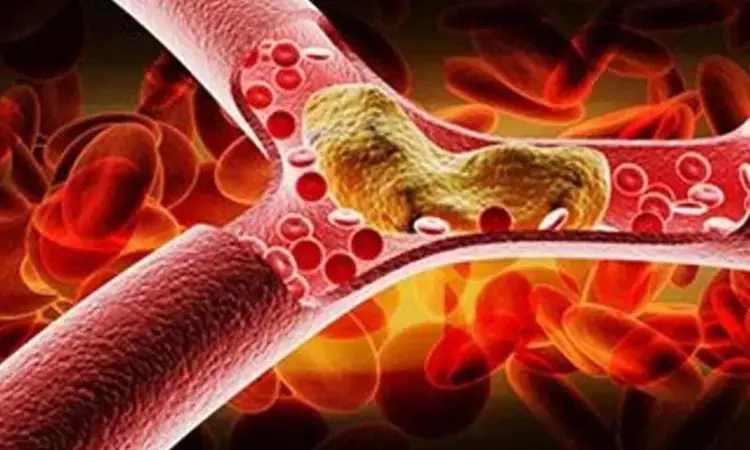- Home
- Medical news & Guidelines
- Anesthesiology
- Cardiology and CTVS
- Critical Care
- Dentistry
- Dermatology
- Diabetes and Endocrinology
- ENT
- Gastroenterology
- Medicine
- Nephrology
- Neurology
- Obstretics-Gynaecology
- Oncology
- Ophthalmology
- Orthopaedics
- Pediatrics-Neonatology
- Psychiatry
- Pulmonology
- Radiology
- Surgery
- Urology
- Laboratory Medicine
- Diet
- Nursing
- Paramedical
- Physiotherapy
- Health news
- Fact Check
- Bone Health Fact Check
- Brain Health Fact Check
- Cancer Related Fact Check
- Child Care Fact Check
- Dental and oral health fact check
- Diabetes and metabolic health fact check
- Diet and Nutrition Fact Check
- Eye and ENT Care Fact Check
- Fitness fact check
- Gut health fact check
- Heart health fact check
- Kidney health fact check
- Medical education fact check
- Men's health fact check
- Respiratory fact check
- Skin and hair care fact check
- Vaccine and Immunization fact check
- Women's health fact check
- AYUSH
- State News
- Andaman and Nicobar Islands
- Andhra Pradesh
- Arunachal Pradesh
- Assam
- Bihar
- Chandigarh
- Chattisgarh
- Dadra and Nagar Haveli
- Daman and Diu
- Delhi
- Goa
- Gujarat
- Haryana
- Himachal Pradesh
- Jammu & Kashmir
- Jharkhand
- Karnataka
- Kerala
- Ladakh
- Lakshadweep
- Madhya Pradesh
- Maharashtra
- Manipur
- Meghalaya
- Mizoram
- Nagaland
- Odisha
- Puducherry
- Punjab
- Rajasthan
- Sikkim
- Tamil Nadu
- Telangana
- Tripura
- Uttar Pradesh
- Uttrakhand
- West Bengal
- Medical Education
- Industry
Thrombectomy after stroke due to basilar-artery occlusion improves functional status: BAOCHE trial

USA: Endovascular thrombectomy 6 to 24 hours after stroke onset due to basilar-artery occlusion led to a higher percentage with good functional status at 90 days versus medical therapy, a study in the New England Journal of Medicine (NEJM) has found. Thrombectomy, however, was associated with more cerebral hemorrhages and procedural complications.
Endovascular thrombectomy is beneficial in randomized trials involving patients with acute stroke due to large-artery occlusion in the anterior circulation. These trials, however, did not include patients with basilar-artery occlusion, a type of stroke associated with poor prognosis. The Basilar Artery International Cooperation Study (BASICS) and the Endovascular Treatment versus Standard Medical Treatment for Vertebrobasilar Artery Occlusion (BEST) trial did not clearly show the benefit of thrombectomy over medical care in basilar-artery occlusion patients, but both trials had methodologic limitations.
Anatomical and pathophysiological characteristics of the brain stem and cerebellum have been postulated to make them more resistant to ischemia than structures supplied by the anterior cerebral circulation. These characteristics may allow reperfusion in basilar-artery stroke patients to have an effect over a longer time window after the onset of stroke than seen in patients with anterior circulation strokes.
Against the above background, Tudor G. Jovin and colleagues conducted the Basilar Artery Occlusion Chinese Endovascular (BAOCHE) trial to examine the safety and effectiveness of endovascular thrombectomy in conjunction with medical therapy versus medical therapy alone in patients with ischemic stroke due to basilar-artery occlusion and an absence of a large baseline infarct on neuroimaging who went randomization 6 to 24 hours following symptom onset.
The analysis included 217 patients (110 in the thrombectomy group and 107 in the control group); randomization occurred at a median of 663 minutes following symptom onset.
The critical points of the study are as follows:
- Enrollment was halted at a prespecified interim analysis because of the superiority of thrombectomy.
- Thrombolysis was used in 14% of the patients in the thrombectomy group and 21% in the control group.
- A modified Rankin scale score of 0 to 3 (primary outcome) occurred in 46% of the thrombectomy group and 24% of the control group (adjusted rate ratio, 1.81).
- The original primary outcome of a modified Rankin scale score of 0 to 4 was 55% and 43%, respectively (adjusted rate ratio, 1.21).
- Symptomatic intracranial hemorrhage occurred in 6% of the thrombectomy group and 1% of the control group (risk ratio, 5.18).
- Mortality at 90 days was 31% in the thrombectomy group and 42% in the control group (adjusted risk ratio, 0.75).
- Procedural complications occurred in 11% of the patients who underwent thrombectomy.
Thrombectomy in patients with stroke due to basilar-artery occlusion who presented 6 to 24 hours after symptom onset led to a higher percentage with good functional status at 90 days versus medical therapy," the researchers wrote in their study. However, thrombectomy was associated with more cerebral hemorrhages and with procedural complications.
Reference:
The study, "Trial of Thrombectomy 6 to 24 Hours after Stroke Due to Basilar-Artery Occlusion," was published in the New England Journal of Medicine.
DOI: 10.1056/NEJMoa2207576
Dr Kamal Kant Kohli-MBBS, DTCD- a chest specialist with more than 30 years of practice and a flair for writing clinical articles, Dr Kamal Kant Kohli joined Medical Dialogues as a Chief Editor of Medical News. Besides writing articles, as an editor, he proofreads and verifies all the medical content published on Medical Dialogues including those coming from journals, studies,medical conferences,guidelines etc. Email: drkohli@medicaldialogues.in. Contact no. 011-43720751


